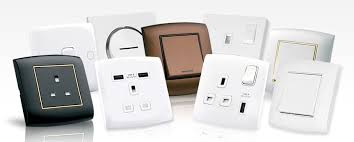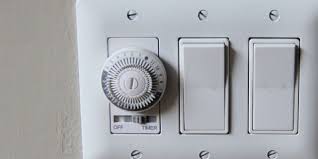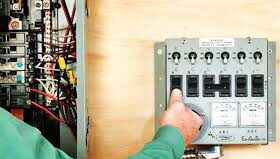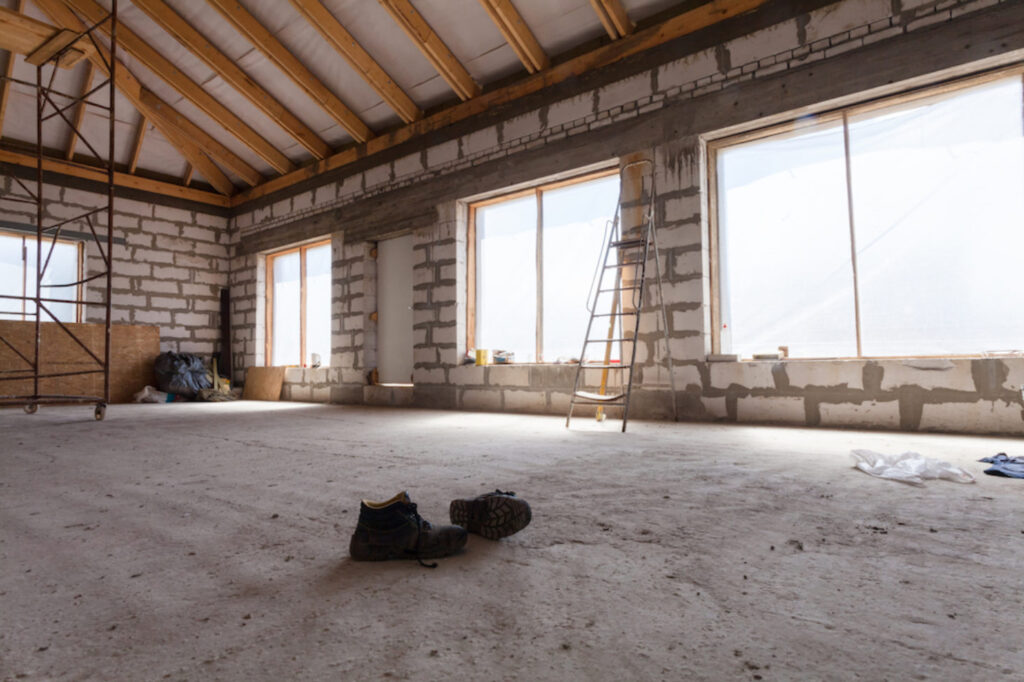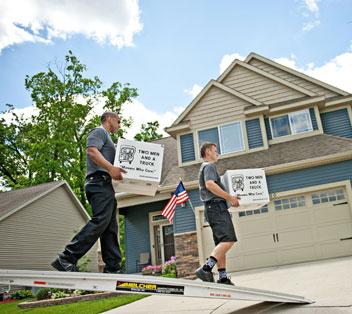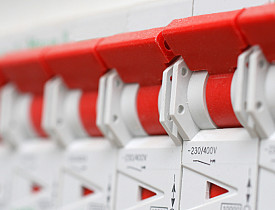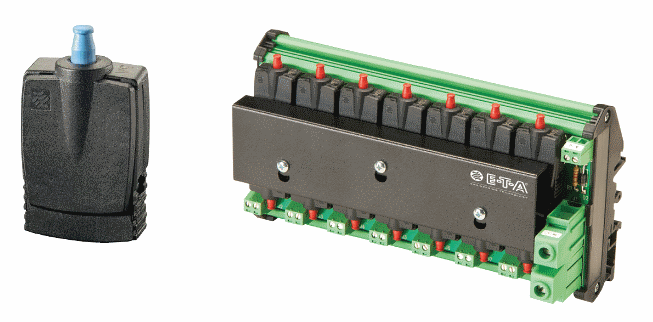How Do I Know Which Type of Epoxy Flooring Is Best For My Floor?
How Do I Know Which Type of Epoxy Flooring Is Best For My Floor?
This is a question many customers ask us along with why is your epoxy better and what does it cost. The following information will answer those questions and help you make the right purchase for your particular floor application. There are different types of flooring you can use in addition to an epoxy coating such as Interlocking Tiles or Rubber Garage Floor Mats. There’s a good discussion here Epoxy vs Tile vs Mats about the pros and cons of each of these different products you can use.
But if you’ve set your heart on a super high gloss epoxy floor coating then stay on this page and we’ll tell you everything you need to know. From being one of the largest epoxy installers in the Tri State area we’ve learned over the years exactly what works and what doesn’t. There’s so many choices today it can be down right confusing and frustrating not to mention easy to make a mistake. The problem is that a lot of the products you’ll see don’t live up to their marketing in real life. They’ll state they are heavy duty, commercial or industrial grade floor coatings and will last a lifetime when they’re no such thing nor capable of any such thing. Know the facts before you buy! If you think you can get a floor that looks like the beautiful red floor above by just going down to your local store or ordering some epoxy online without knowing what you’re buying, you couldn’t be more wrong!
The best way to avoid buying the wrong epoxy flooring is to know the basic facts and learn what causes epoxy coatings to fail or look like they failed. Reading and learning to understand the specifications of each epoxy you’re considering is an important factor. The specifications don’t lie and they tell you exactly what the coating is or isn’t capable of. It’s actually very simple once you know what to look for!
Picking the right epoxy floor coating is a four step process with certain questions you have to answer:
The cost of applying a high quality multi layer epoxy floor coating system as compared to off the shelf water based or hybrid one coat type epoxies can be relatively much more expensive.
So do you need a quality epoxy coating or is a cheap epoxy paint good enough for your floor?
What type of look and finish do you want. Solid color, clear finish or colored flake finish?
What level of durability do you want and or need. Is your floor an industrial application or residential application or somewhere in between? And how do you know an epoxy is really industrial or commercial grade? Many epoxies call themselves industrial or commercial grade until they’re on your floor and you wear right through them. At that point the damage is done, this page will hopefully help you avoid being in that situation.
What condition is your concrete floor in? Is it new, is it old, is it pitted, is it oil stained, does it have a moisture issue? Your floor may need special attention to avoid a failure down the road.
These are some of the questions we will answer in the discussion below. Not addressing these questions prior to your purchase is a more likely than not going to lead to disappointing results.
The first thing you need to determine is what kind of finish you want/need and what your budget is. Whether your coating an industrial floor or just your garage floor or something in between. If your budget won’t allow you to use an epoxy coating system that is equal to or greater than the traffic loads you will run on the floor, then our best advice is don’t epoxy paint your floor. You’re better off going to your local home improvement store and purchasing a sealer and simply sealing the slab to protect against corrosion and to make it easier to clean.
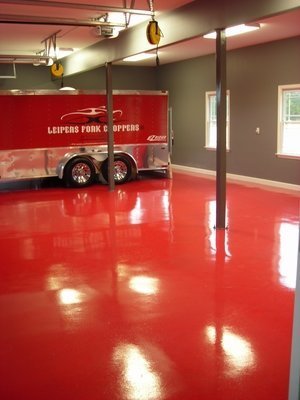
Tips for Choosing the Right Epoxy Floor for Your Project
Deciding to install an epoxy floor in your home or business is a big investment. You want to be sure you choose the right finish and color, helping to give you a great-looking space that’s also easy to maintain
Think of Your Needs
If you’re putting a new epoxy flooring finish in your sleek office building, for example, choosing a big, bold color with a shiny metallic finish might not give off the impression you’re going for.
While you may love that muted overall tone with bright chips in it, depending on where you’re putting the floor and the feel of the rest of the space, it may end up being more distracting than attractive.
Choose Your Finish
At Armor Tough Coatings, we offer two types of epoxy floor finishes: Metallic and standard, or matte. Metallic epoxy floors finish to a lava-like pattern that offers visual interest and can distract the eye from a mess, such as on a shop floor. This finish also is more shiny than a standard epoxy floor, adding extra brightness to the space.
Choosing a Color
Color can make or break the look of your finished epoxy floor. If you choose the wrong color for your room, like choosing the wrong carpeting, it could impact the look and feel of the space. However, the right epoxy floor in the right color can elevate a space to give it a sleek, modern feel.
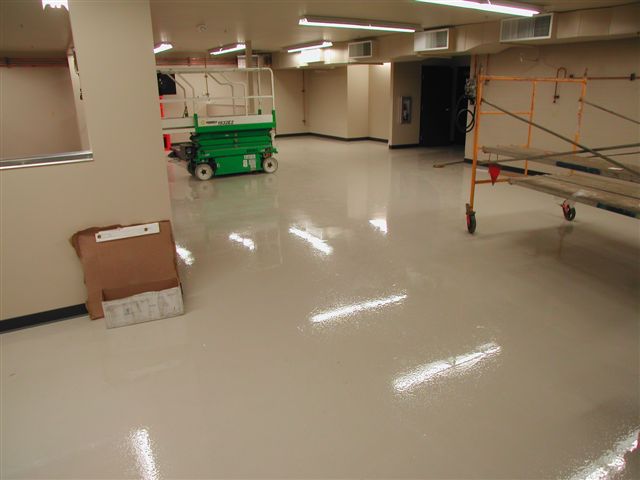
How do you choose the best epoxy floor coating?
Picking the right epoxy floor coating is a four step process:
The cost of applying a high quality multi layer epoxy floor coating system as compared to off the shelf water based or hybrid one coat type epoxies can be relatively much more do you need a quality epoxy coating or is a cheap epoxy paint good enough for your floor?
What type of look and finish do you want. Solid color, clear finish or colored flake finish?
What level of durability do you want and or need. Is your floor an industrial application or residential application or somewhere in between? And how do you know an epoxy is really industrial or commercial grade? Many epoxies call themselves industrial or commercial grade until they’re on your floor and you wear right through them. At that point the damage is done, this page will hopefully help you avoid being in that situation.
What condition is your concrete floor in? Is it new, is it old, is it pitted, is it oil stained, does it have a moisture issue? Your floor may need special attention to avoid a failure down the road.
First off, you understand why you need it for. Then you talk to professionals, who can tell you if epoxy is a right decision for your location and which one to go with

Choosing the Right Epoxy Flooring for Your Needs
When it comes to giving your floors an overhaul, there are many different options available. One of the most popular for commercial, industrial, and institutional applications is epoxy flooring. However, there are also several different choices available, which means you need to know which one will work best for your needs. The following information will help you determine the best option for your application
high build Epoxy Coatings
High build epoxies are a great choice for areas where durability, slip resistance, and easy maintenance are most important. These are designed for industrial wear applications
Self-Leveling Epoxy Flooring
Self-leveling epoxy (SLE) is a great option for industrial flooring applications, including chemical and battery plants, loading docks, ramps, and other high traffic areas. It can be used to either replace or restore concrete floors that have started eroding. SLE is a strong, durable 100% solids epoxy that provides a dense surface that is skid resistant, and can provide different degrees of shock, thermal, and impact resistance. It also prevents dirt and chemicals from penetrating the surface, which results in a longer lasting flooring option. There are also several different polyurethane and epoxy topcoats that can be added to provide even more durability and chemical resistance.
Lumiere Designer Epoxy
Lumiere designer epoxy flooring is a premium coating that provides enhanced shine, color, and three-dimensional depth that comes from its ability reflect light via metallic pigments. This high shine option is perfect for businesses that want to ensure that their prestige and quality permeates every inch of their establishment, including showrooms, nightclubs, offices, health care facilities, gyms, spas, salons, and any other locations that want to project a high-class image
Additional Epoxy Uses
In addition to these epoxy flooring options, epoxy can also be used for wall coatings. This type of system uses 100% solids epoxy for use in commercial, residential, and industrial settings that require high chemical and impact resistance, ease of maintenance, high durability, and protection from mold and bacterial growth, all with high reflectivity. With different topcoats, this coating system can also become antimicrobial, and withstand exposure to strong acids, alcohols, and solvents.

How to Choose Best Epoxy Floor Coating
Are you thinking about changing the floor of your living room, kitchen, or walking path? Epoxy floors are an affordable and seamless option as there is no space for bacteria or other contaminants to grow. It is also a perfect choice for food processing and restaurant businesses. But don’t forget, it is also great for residential building especially for kitchen or toilets.
So, if you want to gets a shiny, glossy, long-lasting, and non-slippery floor, then contact with a Mesa, AZ epoxy flooring contractors to avail the best option. You can conduct DIY epoxy flooring installation wok just by following some easy instructions or hire an expert to do so. There are several epoxy flooring options, you can choose the best based on how much traffic passes on your required area and how often you will have to clean or touch up. Definitely, the cost is the most considerable factor while choosing the epoxy floor coating.
Water-based paint
Water-based epoxy flooring is easy to apply, least toxic, durable, and cheapest option for you, if you want something economical for your home. It is a great and user-friendly option for domestic buildings but not so good for industrial purposes that have problems with dampness. Water-based epoxy flooring paints often need annual touch-ups. Some people don’t believe that water-based paint is a real epoxy resin since it does not come with two separate parts like other kinds of epoxy materials. You will not need to mix the hardener with the resin chemical before the application. It is pre-mixed paint that is why it is easy to apply.
Two-parts solvent-based paint
The epoxy floor paint is stronger than water-based paint but it is a more toxic option. You have to mix both the parts of the paint before application. You should be cautious and meticulous while applying it. Professional painters claim that it is not user –friendly option for many reasons. But on the opposite side, it is durable and lasts longer than others. Also on the positive side, it is easy to clean and maintain.
Two parts 100 percent epoxy solids
It is a perfect choice for you if you want a durable floor. This type of epoxy coating is created through multiply chemical processes that make beautiful, hard, and strong surfaces. Some epoxy flooring experts have claimed that it is more durable than concrete flooring as it is five times stronger and thicker than water-based paint
